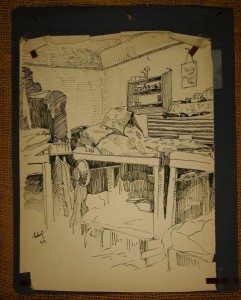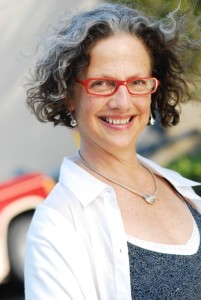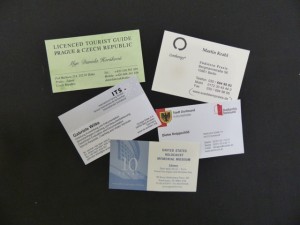
Share
Three months after my German great-aunt died at 100, the Catholic priest she lived with sent me three shoeboxes full of photos, letters and documents that helped me deepen my knowledge of the unconventional lives they led across the whole of the 20th century Europe. I’d heard family stories about these two for years, but exploring the contents of those shoeboxes cemented my conviction to write a novel about them, Even in Darkness. From my first April book event in Austin, to the present day, readers have approached me with stories of their own family histories, and questions about how to preserve them.
Not everyone wants to write a novel, but it seems as if everybody’s got that box full of old photos, bundles of letters, birth certificates or marriage licenses. Or, they wish they had such a box. Some people know a little, some know a lot about the family members in the pictures and the stories behind them. I often hear, “I wish I knew more…” or “One of these days, I’ve got to write that story!” If you’re ready to dust that box off, but you’re not quite sure what to do next, and if the whole task seems overwhelming, try these organizing steps. You may well find they will lead to surprising discoveries and enjoyable experiences along the way to creating a precious family legacy project.
1. Figure out: What’s the real story? Sifting through your memories and the contents of your “shoebox,” what is the story that leaps out at you, won’t let go of you? Is one person a standout character? One relationship? Is the saga of a whole family what fascinates you? Make note of one or maybe 2-3 ideas for a family legacy story that interests you. You may change your focus, but it’s good to start with one.

2. Think about the form in which you’d like to preserve this story. If you want a written narrative, but you’re not comfortable writing yourself, consider getting help from a family member, or reach out to an organization like The Writer’s League of Texas for resources and help. This is a good time to poll other family members about their interest in this project. Will they help? Will they participate?If you are thinking of collecting or creating an audio story, check out resources like the StoryCorps app for recording interviews on your iPhone.
There are many businesses, such as StoryWorth, that have sprung up to assist families in interacting to collect family histories. Photo books, scrapbooks and websites are also possible formats with many businesses standing by to help structure the project and manage the technical aspects if you don’t want to do it yourself.
3. Plan your research.
Chances are your shoebox and your memories won’t answer all your questions about your family story. Consider finding out more through:
a. Genealogical research. The big commercial genealogical websites such as Ancestry.com or Heritage.com are great places to create a family tree and do research, and Texas Genealogical and Historical Societies list local organizations to help. Always and forever, remember your local public library!
b. Interviews with other family members, using both open ended and targeted questions. These family members’ knowledge and perspective may depart from yours in interesting ways. It may take time for people to open up. Be patient. Try to audio or video record, but notes work too. Write up the interview soon after it takes place.
c. Traveling to places where the family story took place. Take pictures and videos. Sense of place is a powerful part of any story.
d. Using archives, local registries and the people who work there to help you find information from public records, newspapers etc.
4. Work at your own comfortable pace. The 15 years of reading, interviewing, traveling and translating I did for Even in Darkness may be far more than you’ll need to do, but give yourself the time to develop your own sense of what the story means and how the parts fit together.
5. Share what you’re learning as the project develops. Keep other family members in the loop. Join a writer’s group, scrapbooking club, genealogy group or online forum with this shared interest. When I wrote my novel, I also created a section of my website to display photos and archival material that didn’t go into the book but were related.
The very satisfying knowledge that you have preserved a treasured family story is within the grasp of each of us, once we’ve found the story, defined its scope and form, worked at a reasonable pace, and used the necessary outside resources. Most of all, enjoy!

By Barbara Stark-Nemon
Bio:
Barbara Stark-Nemon, author of the acclaimed novel Even in Darkness, lives, writes, gardens, sails and does fiber art in Ann Arbor, and Northport, MI. You can learn more about her fascination with family stories at www.barbarastarknemon.com.















